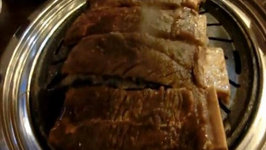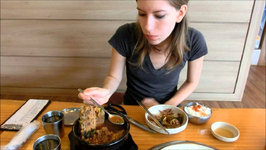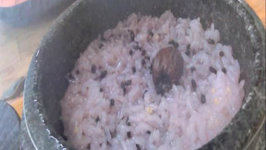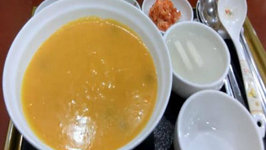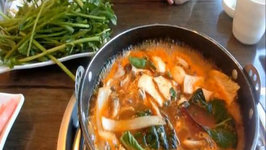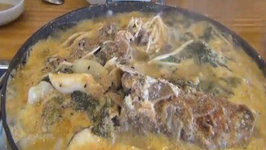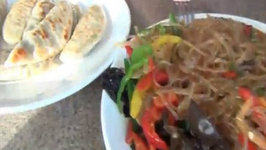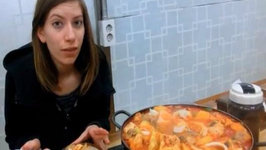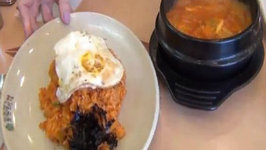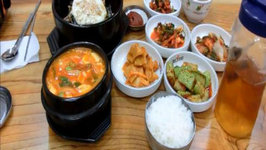Korean Barbecue (Galbi) Dinner in Anseong, Korea Life in Korea
In this video we (Sam and Audrey) go to yet another Korean restaurant this time it is to a Korean barbecue where you can cook your meat at the table. Cooking self serve would typically be a dangerous thing when I'm at the dinner table, but surprisingly we did rather well in this particular occasion. When going to these type of do it yourself Korean restaurants, we usually opt for the popular samgyeopsal (pork belly), but today we decided to order galbi instead. In Korean, galbi refers to ribs, and this cut is soft, lean, and juicy. If you're not a big fan of fat we'd recommend choosing the galbi over the samgyeopsal - it's a much healthier cute of meat. While getting down to business at the dining table, we seared the long beef strips for a few minutes before picking up the tongs and a pair of scissors to cut the meat into more manageable pieces. Cutting meat with scissors is something that neither of us had seen before coming to Korea, but now it has become second nature to cook the meat this way. I have to admit that when I now see a pair of scissors I don't look at them the same way. As usual, we received a myriad of side dishes including an egg soufflé and a soybean soup. The egg soufflé was so delicious we had to ask for seconds. Overall, it was an epic feast with the wonderful main meat dish and all of the delicious side dishes. I often wish restaurants around the world would be as generous with their portions and refills as they are in Korea. Kalbi or galbi generally refers to a variety of gui or grilled dishes in Korean cuisine that is made with marinated beef (or pork) short ribs in a ganjang-based sauce (Korean soy sauce).1 In the Korean language, galbi literally means "rib" and can often indicate uncooked ribs. In addition, the dish's full name is galbi gui, although "gui" (grilling) is commonly omitted to refer to it. Galbi is generally made with beef ribs, and it may be called "sogalbi" or "soegalbi". Prefix "so" or "soe" (beef) is often omitted. It is also called bulgalbi when grilled over fire. As the literal meaning is "rib", the galbi dish can also be made with pork ribs or chicken. In such cases, the dish is called "dwaeji galbi" or "dak galbi" to emphasize the main ingredient.1 It is listed at number 41 on World's 50 most delicious foods readers' poll complied by CNN Go in 2011. When cooked on a griddle or grill, the meat is usually cut in thin slices across the bones and called L.A. Galbi. This permits the marinade to penetrate the meat faster, allows the meat to cook more quickly, creates a more tender cut, and makes it easier to eat the finished dish with chopsticks. Traditional cut is called Wang Galbi, literally meaning King Ribs. In this version, ribs are into 2 to 5 inch segments, and the meat is filleted in layers away from the bone to form a uniformly thin layer. Wang Galbi is usually what is served in restaurants, as it is the traditional cut and hence considered more genuine. Rarely, if ever, are L.A. Galbi served at top establishments. Pre-cut galbi is available from many meat markets in Korea and elsewhere. Galbi is generally served in restaurants known as "galbi houses", and the meat is cooked right at customers' tables on grills set in the tables (usually by the customers themselves). It is typically served with lettuce, perilla, or other leafy vegetables used to wrap the meat, which is then dipped in ssamjang, a sauce made of fermented bean paste and red pepper paste. It is often accompanied by side dishes known as banchan.

